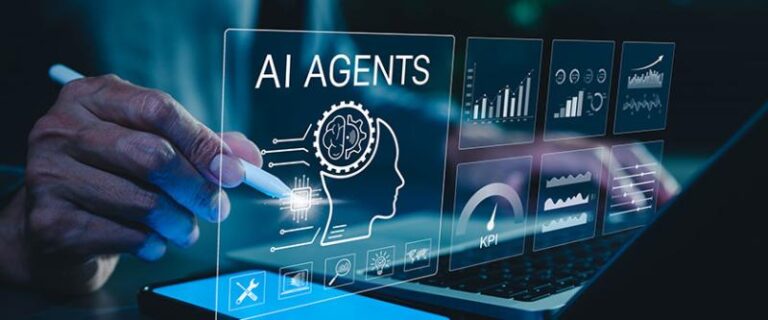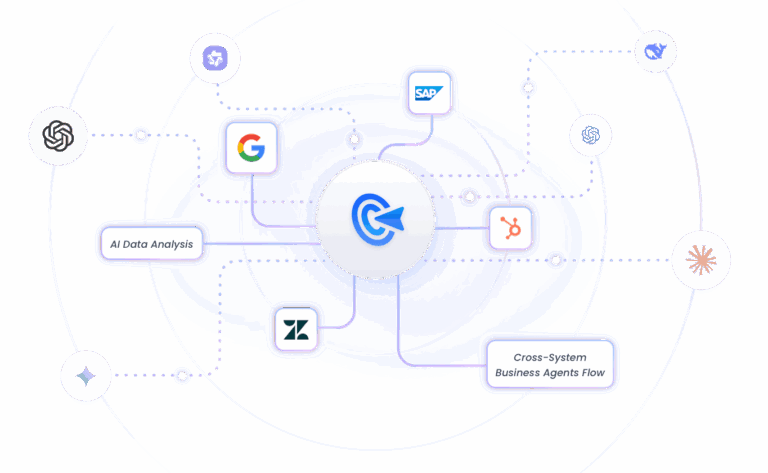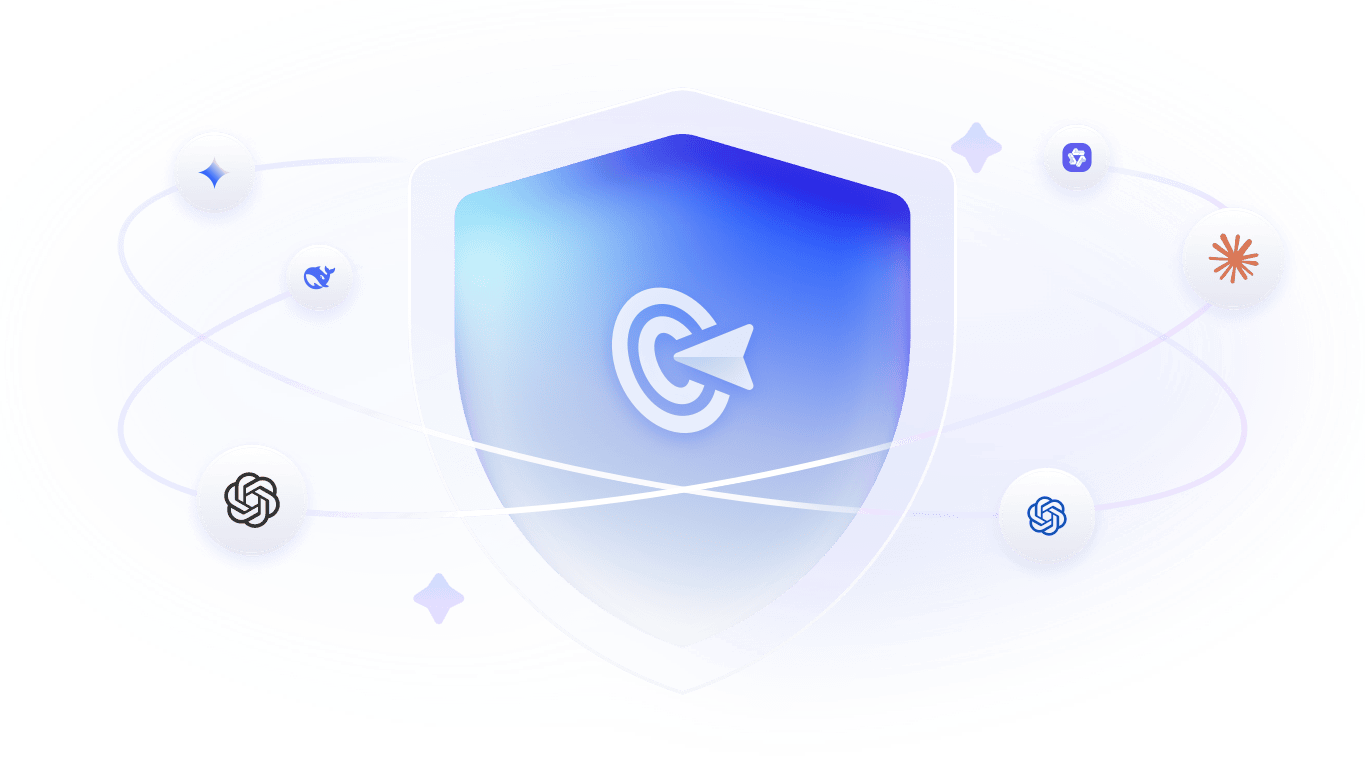- 1. Why Traditional Campaign Management Falls Behind
- 2. From Automation to Agentic Campaign Optimization
- 3. Core Capabilities of AI-Driven Campaign Optimization
- 4. How Industries Are Reinventing Campaign Optimization
- 5. The Future of Marketing Campaign Optimization
- 6. Building the Agentic Marketing Stack with GoInsight.AI
- 7. Conclusion
- 8. FAQs
As digital marketing grows more complex and data-rich, traditional tools can no longer keep up with the speed and scale required for effective campaign optimization. Marketers need systems that don’t just analyze after the fact but act in real time.
AI marketing agents represent that next leap, enabling continuous optimization across every channel. Gartner predicts that by 2027, AI agents will automate 50% of all business decisions, while Google Cloud reports that 46% of organizations already use agentic AI in marketing.
Why Traditional Campaign Management Falls Behind

The traditional approach to campaign management is fundamentally broken, leaving marketing teams with three typical pain points:
1. Data Silos
First, data silos fracture your view, leading to inconsistent or incomplete insights. You have your advertising data in Google and Meta, customer information in a CRM, and content metrics in another tool. There’s no unified analytical framework, making it difficult to see the full picture. As such, you can’t make fast, informed decisions or personalize experiences across channels.
2. Delayed Feedback Loops
Second, your feedback loops are way behind schedule and out of sync. You set up an A/B test and wait days, sometimes weeks, for statistically significant results. And by the time you decide to adjust a budget or tweak a campaign, the market dynamics have shifted.
3. Static Rules, Dynamic Markets
Third, traditional campaign management often fails because while the market is changing, you’re following a static rulebook.
Example: “if CPA exceeds $50, pause the ad group.”
But what if that ad group is driving your highest-value, long-term customers? Static rules cannot interpret context or adapt to the transience of user behavior.
This constant lag coming from data silos, delayed feedback loops, and static rules is precisely why “Agentic Intelligence” has emerged. AI agents have the cyclical capability to observe, decide, act, and adapt in real-time.
From Automation to Agentic Campaign Optimization
Many marketers mix up automation and agentic intelligence, thinking they’re two names for the same capabilities. But in reality, these are two distinct functions.
Traditional marketing automation tools execute fixed, predefined tasks. For example, a marketing automation tool can send email sequences based on predefined workflows, flips creatives on preset dates, and applies simple bid rules. That’s fine when conditions are predictable, even though it lacks intelligence and doesn’t make decisions on its own.
Agentic optimization goes further. An AI marketing agent autonomously senses the environment and takes dynamic decisions and actions while running on a continuous, real-time optimization loop. This replaces the days-long human cycle with minutes, effectively reducing waste and improving return on ad spend by responding to active market changes.
Here’s how it happens:
- Sense: The AI agent collects live data from all your connected platforms.
- Analyze: It analyzes all the data to detect patterns and insights and diagnose probable causes.
- Decide: It determines the best optimization strategy, generating targeted actions aimed at achieving your objectives.
- Act: Finally, it executes the changes, evaluates the results, and feeds outcomes back into the loop to refine its next decisions.
This isn’t a theory. It’s already happening. Marketing teams are adopting this intelligent loop system to adjust to market conditions in real-time and achieve their objectives.
Core Capabilities of AI-Driven Campaign Optimization

So, what does this look like in practice? The value of agentic systems breaks down into four functional pillars that work for you:
1. Autonomous Optimization
The agent doesn’t wait for reviews or reports, it acts continuously. It monitors performance signals in real time and autonomously fine-tunes campaigns, adjusting bids, reallocating budgets, and prioritizing top-performing creatives to meet defined goals like ROAS or CPA. No check-ins, no manual tweaks, just intelligent, ongoing optimization that keeps every campaign aligned with business objectives.
2. Adaptive Targeting
Audiences are not static. The market shifts, intents change, and new cohorts appear. A segment that converted last week might be saturated today. Agentic AI catches early signals of these changes. It dynamically identifies shifts in customer demographics or behavior, intent signals, and other variables and then refines segmentation in-flight.
And with predictive models layered in, the agent can easily find lookalike audiences with higher intent. It will then test and scale those segments, besides matching the right audience with the best channel and creative.
3. Continuous Learning & Predictive Intelligence
Besides optimizing current campaign performance, AI agents predict optimal actions for the next cycle. Every single campaign iteration, such as impressions, clicks, and conversions, continuously feeds the agent’s memory, improving its predictive intelligence. Instead of repeating yesterday’s wins, the system predicts tomorrow’s opportunities and prepares your campaigns to capture them.
4. Cross-Channel Collaboration
Above all, cross-channel collaboration allows multiple specialized AI agents to work together to achieve synergy. Your content agent, advertising agent, and CRM agent share contextual insights. Based on those metrics, they collaborate to achieve consistent optimization across platforms, from Google Ads to LinkedIn and Meta to email.
How Industries Are Reinventing Campaign Optimization
The way different industries are redefining campaign optimization differs, but they share the common pattern: faster, smarter actions deliver better ROI.
Retail & eCommerce
Agents in retail and eCommerce make campaign tweaks and run dynamic promotions based on changes in inventory, margin, competitor pricing, customer behavior, and demand signals. By continuously analyzing these data streams, AI agents can identify real-time opportunities, adjust targeting and messaging instantly, and help achieve measurable improvements in click-through rates, conversion performance, and overall return on ad spend.
B2B SaaS
For B2B SaaS, the challenge is to identify high-intent prospects in a long and complex sales cycle. An AI agent can automatically detect key signals such as trial behavior, feature usage, and content engagement, then analyze these patterns in real time to predict buying readiness, personalize outreach, and continuously optimize ad touchpoints and budget allocation for higher conversion efficiency.
Finance & Insurance
In finance and insurance, trust and compliance are the two most important factors. In this vertical, agents monitor ad copy and landing pages in real time, flagging creatives that might violate regulations before they go live. At the same time, they optimize campaigns for trust signals, shifting spend toward channels where users show higher engagement. This continuous audience feedback optimization with simultaneous real-time compliance checks improves conversion while reducing unwanted legal exposure.
The Future of Marketing Campaign Optimization
Going forward, we see three distinct trends shaping the future of campaign optimization:
Trend 1: Evolution from a Single-Agent to Multi-Agent Ecosystems
Campaign optimization will evolve from a single-agent to multi-agent ecosystems. In fact, this Multi-Agent System (MAS) for marketing is the next logical step. Teams of specialized AI workers will collaborate like a human marketing squad, where one handles creative, another manages bids, and a third analyzes sentiment. They negotiate, share insights, and align on goals.
Trend 2: Transformation of the Marketer’s Role
We’ll see the marketer's role transforming from a hands-on executor to a strategic commander. You’ll spend less time digging through spreadsheets and more time defining high-level strategy, setting objectives, defining guardrails, and guiding your agents through natural language commands.
Trends 3: AI-Driven "Always-on Optimization"
At a time when attention spans shrink and competition intensifies, always-on optimization becomes a growth engine for your enterprise. Companies will increasingly adopt AI-driven marketing teams that operate 24/7, continually learn, and autonomously pursue marketing objectives.
Building the Agentic Marketing Stack with GoInsight.AI
The evolution toward agentic marketing demands more than smarter tools, it requires an intelligent, unified system to orchestrate them.
GoInsight.AI delivers exactly that: an enterprise-ready platform that unifies data, automates workflows, and empowers AI marketing agents to drive real-time, adaptive decisions. By connecting fragmented systems and streamlining operations, it helps marketing teams move faster, collaborate smarter, and optimize performance across every channel.

Core Capabilities:
- Unified Data & Knowledge Management: Integrates CRM, analytics, and knowledge bases to eliminate silos and enable data-driven decisions.
- Multi-Agent Collaboration: Multiple AI agents work in parallel, coordinating tasks and insights across teams and channels.
- Automated Workflow & Orchestration: Streamlines repetitive processes, freeing teams to focus on strategy.
- Adaptive Insights & Recommendations: Continuously analyzes trends and audience behavior to deliver actionable guidance.
By uniting data, intelligence, and automation, GoInsight.AI transforms marketing operations into a connected, adaptive ecosystem ready for the agentic future.
Conclusion
AI marketing agents are here to help you reclaim your time from reactive firefighting so you can focus on strategy, creativity, and insight. They help you move campaign optimization from delayed response to ongoing self-evolution.
It’s never too late to build your agentic foundation. After all, campaigns that can learn in real time, win in real time. If you’re ready to stop chasing data and start commanding intelligent systems, head over to GoInsight and find out how to get the ball rolling.






Leave a Reply.